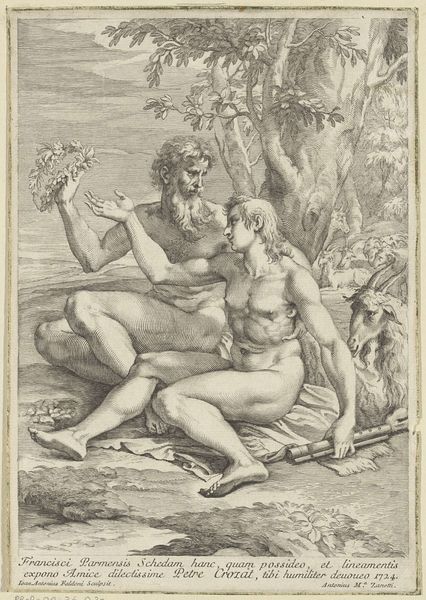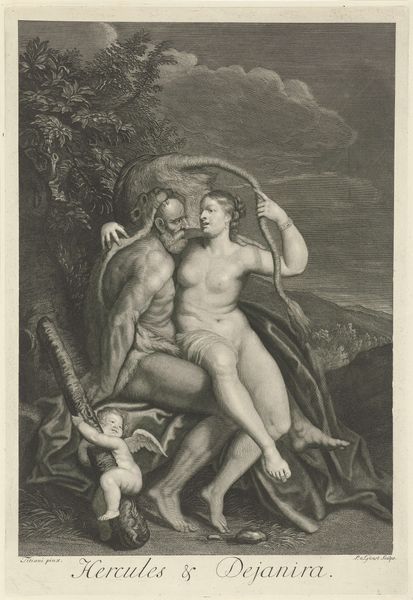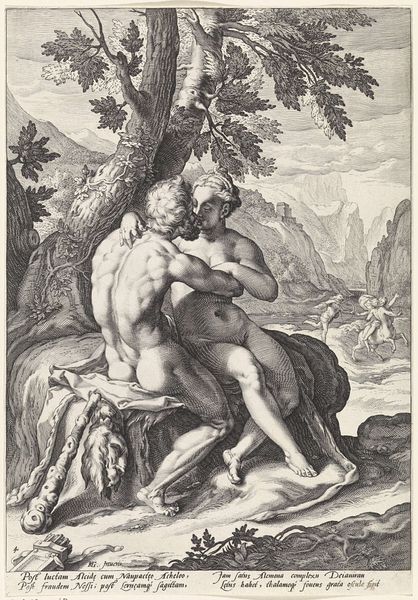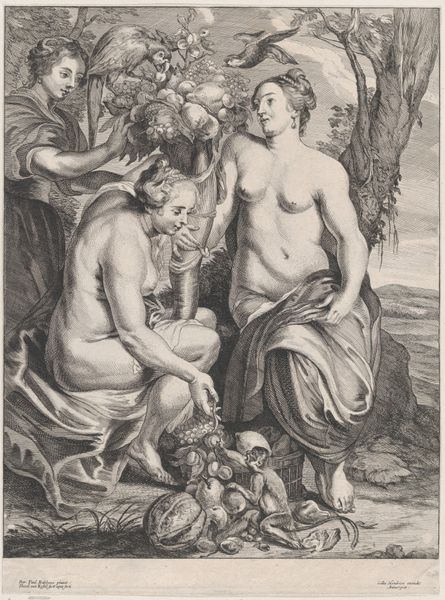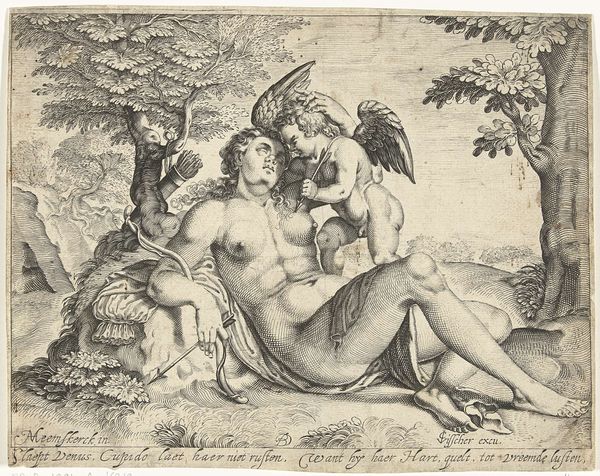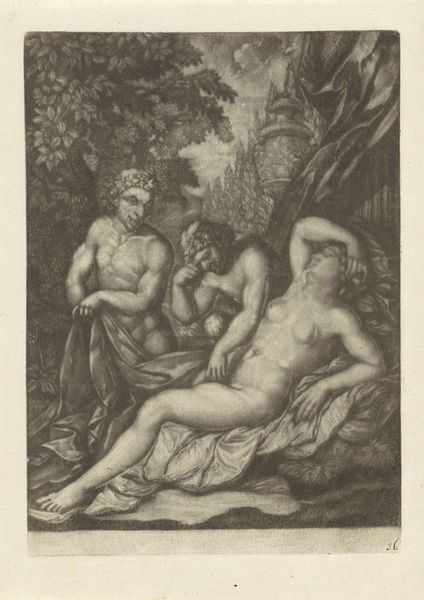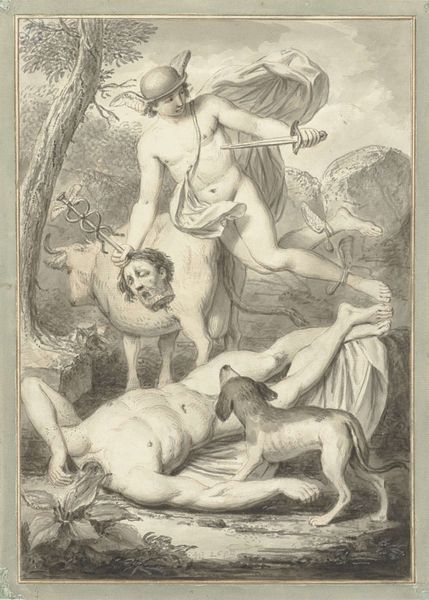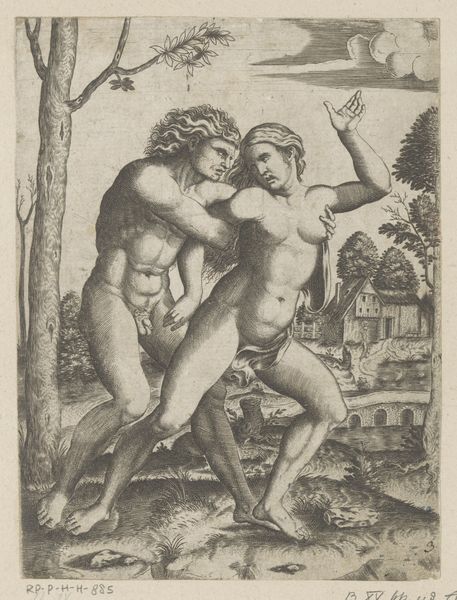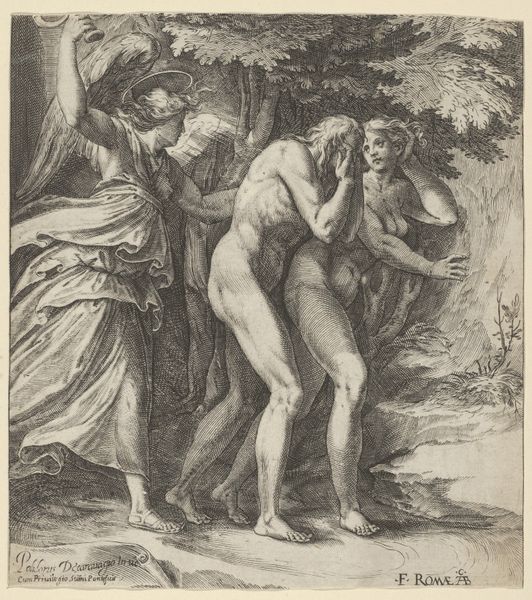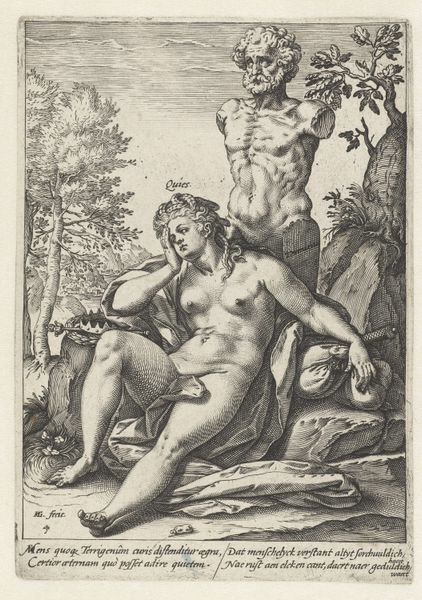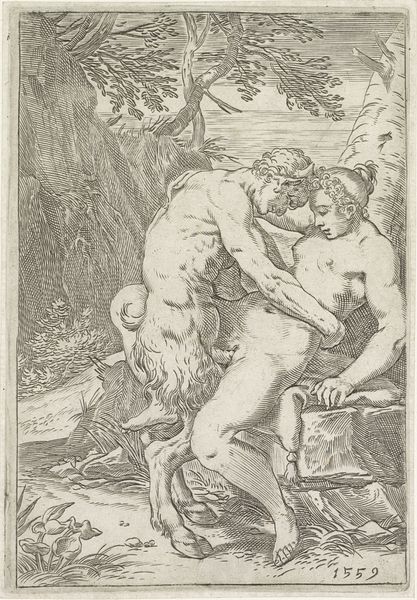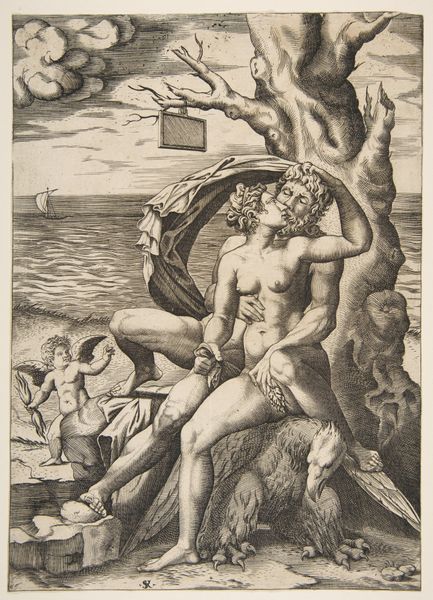
drawing, print, engraving
#
drawing
#
baroque
# print
#
landscape
#
figuration
#
genre-painting
#
nude
#
engraving
Dimensions: sheet: 8 1/4 x 6 1/8 in. (21 x 15.5 cm)
Copyright: Public Domain
Curator: Here we have Lucas Vorsterman's engraving, "Two Nude Shepherds," created sometime between 1610 and 1675. Editor: It’s striking how tactile it feels despite being a print. You can almost feel the roughness of the engraving on the paper. The musculature on the figures has been lovingly rendered by Vorsterman and the goats have been carefully shaded into the landscape. Curator: Vorsterman, an engraver, understood how to evoke powerful symbolism. The wreath is indicative of knowledge or perhaps some form of apotheosis, the acceptance into something heavenly, while the pastoral instruments connect us to a mythic and innocent past. What is striking about these figures is their almost androgynous presentation. Editor: I’m immediately drawn to the landscape elements. See the background is teeming with figures that could just be sheep but are really carefully drawn, living individuals, even, in some sense portraits of the specific animals, with distinctive textures of hair for the goats! What kind of labor did Vorsterman perform? What tools would have allowed Vorsterman to create such intricate engravings? What papers and materials was he using, where did they come from? These are key considerations here. Curator: Those figures create an idyllic space and one which connects with ideas of courtly love which would be known by viewers at the time, where innocence could become eroticised. These figures of youthful virility tap into ideas, popular at the time, surrounding homosexuality. How viewers would read this would depend entirely on the viewer's disposition. These figures become symbolic and resonant of power structures, in terms of sexuality but in terms of a political landscape which could potentially be upset through different readings. Editor: Exactly. And understanding the processes – the material transformations involved in producing this print – grounds the symbolism. Each mark, each line, required decisions and precise manipulation of tools and material. Even the chemical baths Vorsterman would've used to create the matrix through which ink can pass have sociohistorical origins which are a part of the experience of looking at it and the history of experiencing art and prints from this time. Curator: Thank you for helping me tease out those material considerations and that intersection between intention, audience, material and symbolism. Editor: And thank you for illuminating those layers of symbolism which remind us that objects have an intrinsic agency and their creators perform actions with those symbolic registers in mind!
Comments
No comments
Be the first to comment and join the conversation on the ultimate creative platform.
